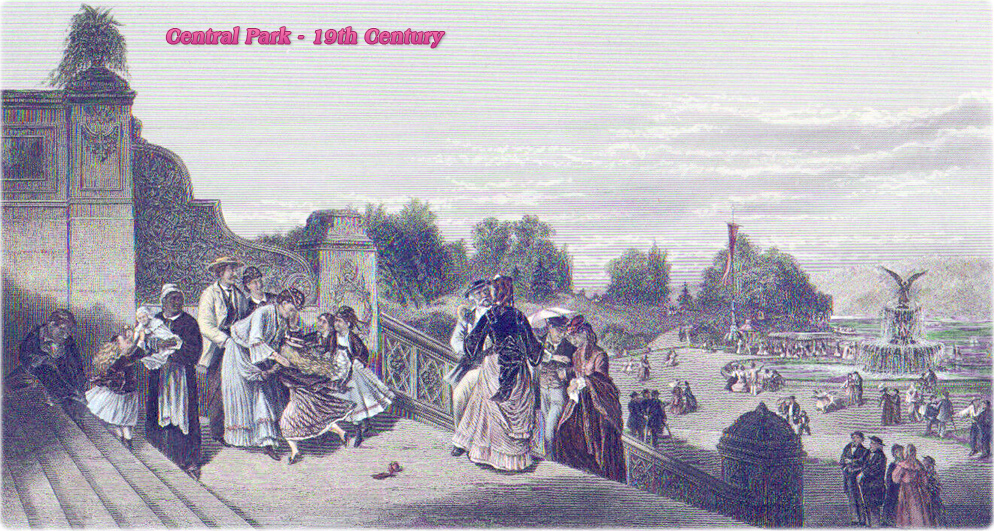
In the New York City of the late 19th century, Central Park was the premier place for outdoor entertainment, especially after Bethesda Terrace and its iconic fountain were opened to the public.
In the early 19 century the area that would became Central Park was an irregular terrain of swamps and bluffs. The Park was envisioned in the 1840s and the acquisition by the city of the title to lands for Central Park began in 1847 and continued through 1852.
According to Stokes (Iconography of Manhattan Island, ... 1926), the first known suggestion for the Central Park is attributed to Andrew J. Downing (1815-1852), a renowned landscape architect and editor of The Horticulturist magazine. «In 1849, while Mr. Downing was in London, he wrote a letter to the Horticulturist on the importance of parks in the growing city of New York. The letter attracted a great deal of attention. In 1850 he followed with a series of letters pointing out the lack of open spaces and places for recreation and urged the necessity of a great park. "This", said the late Charles H. Haswell, in his Reminiscences of an Octogenarian, "was the actual beginning of the Central Park, the birth of the idea, ... Another strong advocate of a park in the central part of the island was Fernando Wood, who had been abroad and who was impressed with the beauty of the foreign parks, particularly those of Brussels; and when he was nominated for mayor in 1850 he made the park question one of the issues of the campaign. But he was defeated for the mayoralty by Ambrose C. Kingsland, who took office in January, 1851. Mayor Kingsland then took up the idea of a park", and on May 5, 1851 sent to the common council a message on the subject.»
The New York State Legislature approved the establishment of Central Park in 1853. In 1855, Fernando Wood became Mayor of New York City and in June 1856, he appointed a "consulting board" of seven people, headed by author Washington Irving. Wood hired military engineer Egbert Ludovicus Viele as the park's chief engineer, tasking him with a topographical survey of the site. In 1857, the first Central Park Commission was appointed and, in 1858, selected the “Greensward Plan” by Frederick Law Olmsted, the park’s superintendent at the time, and architect Calvert Vaux. The cleansing of the site began in the same year and lakes replaced old swamps.
The Park first opened for public use in the winter of 1859. The masonry of the Bethesda Fountain was installed by 1863 and it was officially completed in 1873. The Belvedere Castle with exhibit rooms and an observation deck, was completed in 1869. The Cleopatra's Needle that was moved from the ruins of the Caesareum of Alexandria, Egypt, was installed in Central Park, west of the Metropolitan Museum of Art's main building in Manhattan, on February 22, 1881.
Central Park was officially opened in 1876.
The Terrace, Central Park, 1872, by C. Rosenberg and G. R. Hall. Bethesda Fountain is on the right.

|
Copyright © Geographic Guide - Old NYC. 19th Century. |